Tags
Black-headed Seagull, common ragwort, Common Sea Lavender, gorse, hare's-foot clover, harvestman, mudflats, oil, Perennial Glasswort, plants, sand dunes, sea, sea campion, Sea Sandwort, Sea-holly, seashore, Suffolk, sunset, thrift, Walberswick
After a busy day last Friday and a hot, sunny day too, we thought it might be nice to go to the coast for a little while. We knew that it would be extremely crowded for most of the day so we left it until after we had eaten our evening meal and set off just before 8.00 pm.
We decided that we’d visit Walberswick as we hadn’t been there for some time and parked the car in the car-park there at about 8.30 pm.

Walberswick. With its creeks, mudflats, sand-dunes and varied flora it is a favourite place of mine to visit.
The mass of mauve flowers you can see in the photo above are Sea Lavender.
I couldn’t get a clear picture of these flowers – mainly because I couldn’t get down low enough! Sea-lavender (no relation of true Lavender) is related to the cultivated Statices – everlasting flowers. Many people pick these flowers illegally to make dried flower arrangements. Strangely, the drier the ground in which it grows, the taller it gets. This plant grows in great masses on the North Norfolk coast and I would love to see it there again.

There wasn’t much Thrift or Sea Pink (Armeria maritima) left – mainly seedheads. Thrift is a relative of Common Sea-lavender.
I cropped the photo I took.
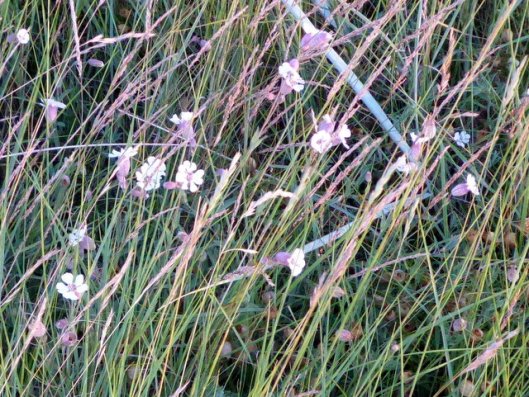
The calyx (the area behind the petals) is swollen, like Bladder Campion is and is similarly patterned with red veins. The petals are larger and thicker than other types of Campion and usually overlap each other.
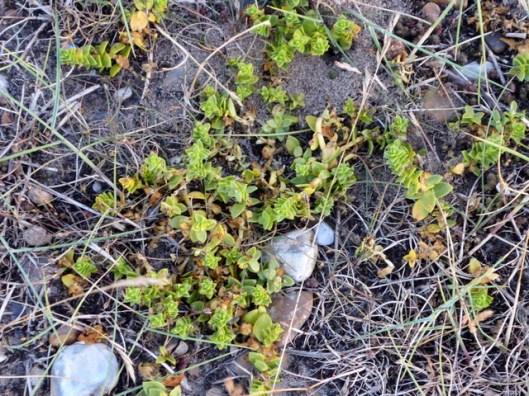
Sea Sandwort (Honckenya peploides). I like the way this plant grows. It reminds me of children’s building toys.
In Richard Mabey’s ‘Flora Britannica’ he says ‘… (Sea Sandwort) is one of the earliest colonisers of sand-dunes and shingle, and remarkable for its sprawling concertinas of geometrically stacked leaves’. It is able to keep growing upwards so if ever it is inundated with sand or mud it can survive. As with many seashore plants it is succulent and edible.
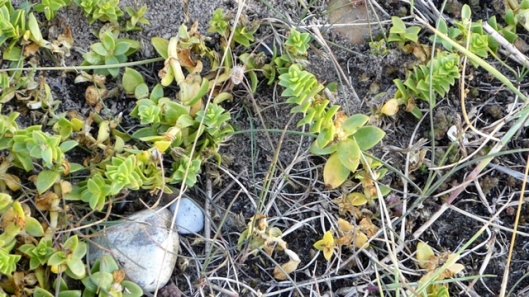
More Sea Sandwort, this time with a Harvestman or Harvest Spider. Can you see it? They are not true spiders but are related to them. They have one-piece bodies and no silk-glands so can’t spin webs.
I was sorry to see this oil on the beach. This is evidence that tankers have been flushing out their tanks illegally in N W European waters .
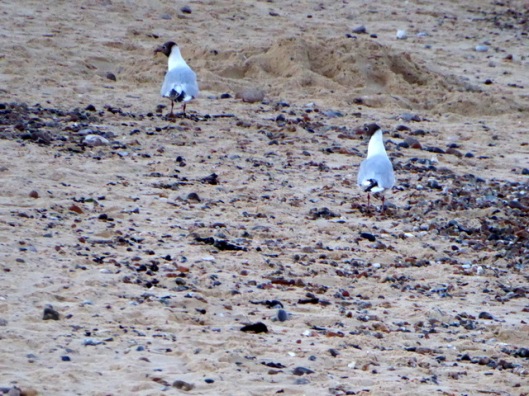
…except these two Black-headed Gulls (Larus ridibundus) who seemed to be doing some synchronised beach-combing.
We made our way back to the dunes where I found a couple more plants to photograph.
Another name for Glasswort is Samphire and like Common Glasswort (an annual plant which is also called Samphire) it can be eaten lightly boiled or pickled in spiced vinegar.
For many hundreds of years Glasswort was used in the manufacture of glass. The succulent stems were gathered at low tide, dried and burned in heaps. The crude ash which is high in soda was then fused with sand to make a poor quality glass. Saltworts were also used for this purpose.
We had enjoyed our hour on the beach and went home cool and relaxed.
Thanks for visiting!

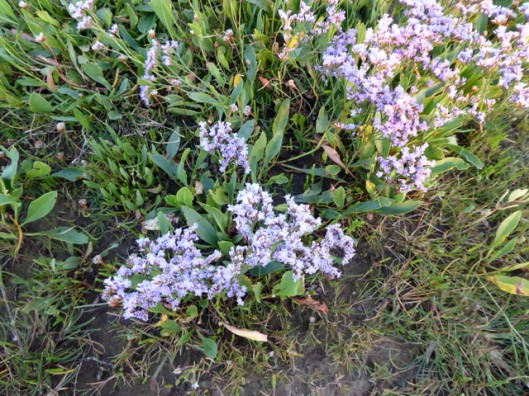
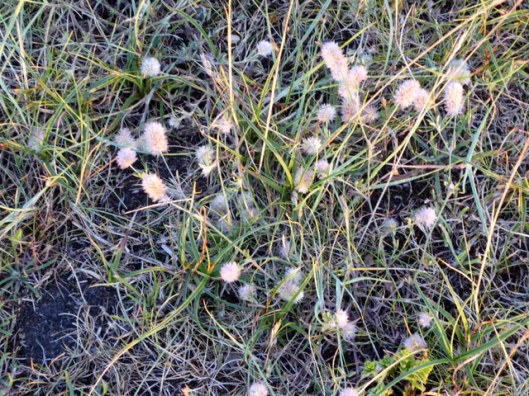




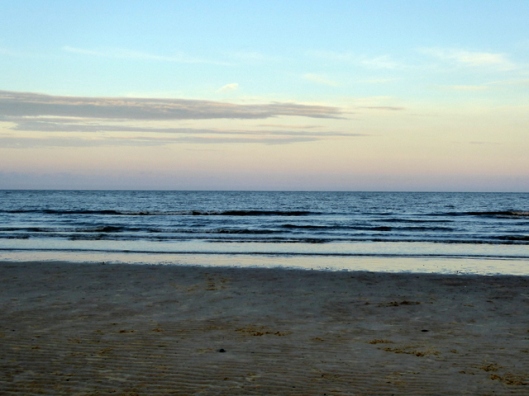
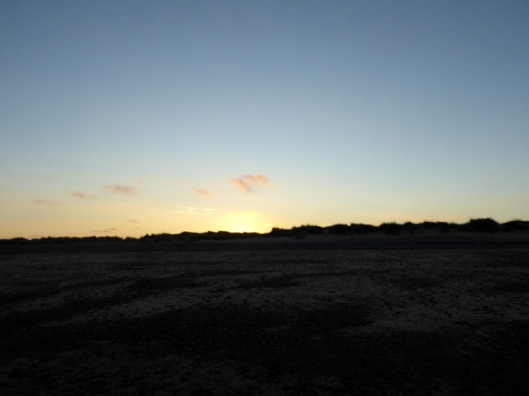


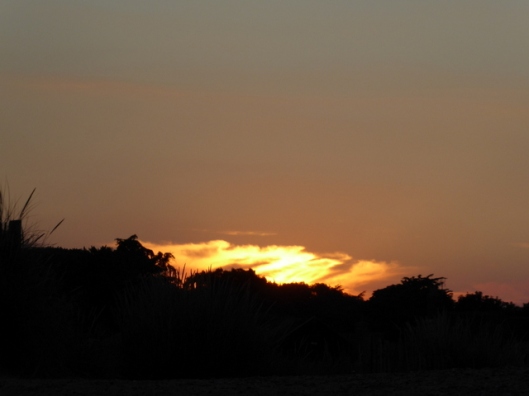
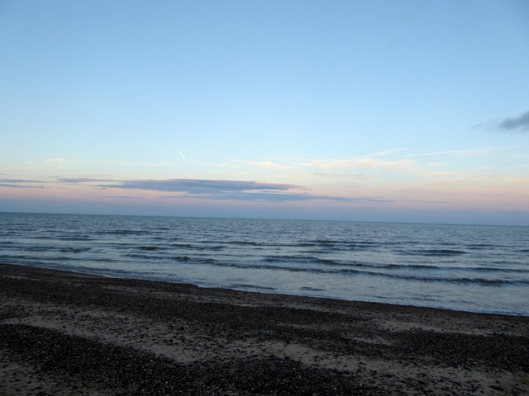
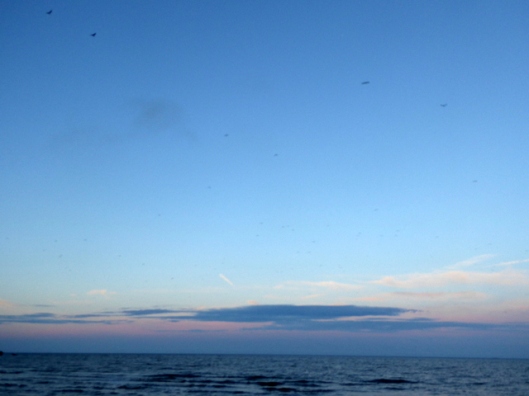
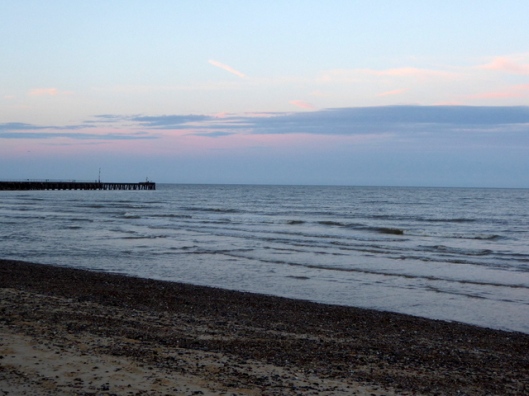
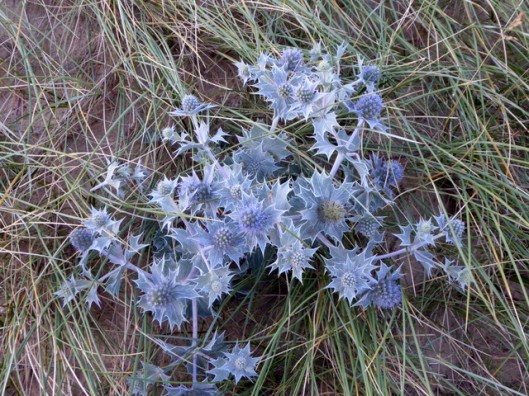

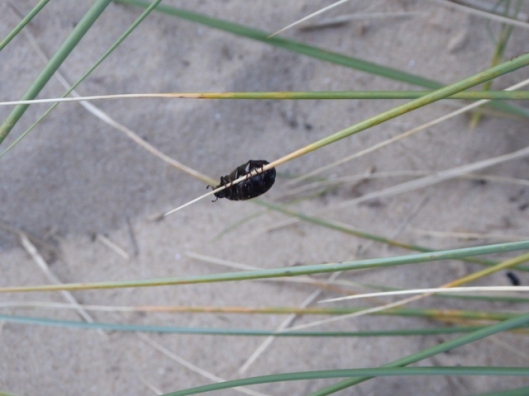



Wow! What a great post, Clare. Your photos are beautiful. I needed a trip to the ocean, so thank you. I agree, the Sea-holly is stunning! I like the little bug hanging on…feels like me by weeks end. 🙂 Have a wonderful weekend! ❤
LikeLiked by 1 person
Thank-you Jill! I do hope your weekend is calming and rejuvenating. ❤
LikeLiked by 1 person
Lots of interesting wild flowers and beautiful views out to sea, thank you.
LikeLiked by 1 person
Thank-you Susan. We had been hoping to return to the sea this evening but heavy rain prevented us.
LikeLike
Beautiful sea holly and so many lovely plants, I like the sea lavender too. Beautiful seaside shots, shame about the oil.
LikeLiked by 1 person
Thank-you! It *is* a shame about the oil – laziness and a disregard for the law on the part of the tanker crews. We see them moored out at sea and we know what they are doing!
LikeLiked by 1 person
Great shots. I love the creeks and mudflats of Suffolk and Norfolk.
LikeLiked by 1 person
Thank-you Margaret. I find them beautiful all year round.
LikeLiked by 1 person
I love seeing seaside plants because I never get there to see them in person.
You certainly saw a lot of different ones. I think my favorite has to be the sea holly. It’s a very unusual and beautiful plant.
It’s too bad about the oil and worse that its getting there is easily preventable when people obey the laws.
You got some great shots of the seascapes and sunsets!
LikeLiked by 1 person
Thank-you Allen. Sea-holly is a favourite of mine too and it doesn’t surprise me that it has become a popular garden plant as well. I love to see sunsets over the ocean but we don’t get them here on the East coast. We do get the sunrise but I’m never at the coast early enough to see that.
LikeLiked by 1 person
I wouldn’t be either!
LikeLiked by 1 person
Great shots – looks like a great evening.
LikeLiked by 1 person
Thank-you – it was!
LikeLiked by 1 person
I loved the first Sea Holly photo, it’s an excellent shot! Superb composition and colors! The whole gallery is great! Thanks Clare! 🙂
LikeLiked by 1 person
Thank-you very much HJ! I am very pleased you liked it. 🙂
LikeLiked by 1 person
Beautiful seaside photos, and especially love the Sea Holly and Sea Lavender. Always enjoy hearing about edible wild plants and the stories behind them as well.
Haven’t seen the Pacific ocean off the Oregon coast in almost 4 years now. I miss it! Route 101 down the coast into California is beautiful, with many fine views of the shore and places to stop.
I had not heard of Triniti before, and I am enjoying listening to the music. Thank you!
LikeLiked by 2 people
My pleasure, Lavinia and thank-you too! I find the sea very soothing and my youngest daughter finds it very beneficial for her anxiety. Her worries fade away while we are at the beach.
LikeLiked by 1 person
Interesting post! I live quite a distance from the sea so know very little about what grows near it. The sea holly certainly looks impressive. I will look out for some of these next time I’m near the coast. Thank you!
LikeLiked by 1 person
My pleasure Kim and thank-you!
LikeLike
Finding a spot with a cool breeze off the water is the perfect antidote to a hot day! The photos show just how perfect. How late is it staying light there? Our sunset right now, is about 8:20–yours must be quite a bit later?
LikeLiked by 1 person
Thank-you Kerry! Sunset today was 8.49 pm so when we were at the beach a week ago it would have been a few minutes later than that. It stays light for a long time after sunset though, doesn’t it, especially with a clear sky. What the Scots call the ‘gloaming’.
LikeLike
Such beautiful plants; a feast for the eyes and the taste buds. How distressing to find oil! I remember the large amounts of oil on many beaches in Egypt; some of it naturally occurring we were told, but a lot of it from dirty tankers.
LikeLiked by 1 person
Thank-you Ann. It is distressing; especially knowing how vulnerable the sea creatures and plants are.
LikeLiked by 1 person
My favorite has to be the sea holly, what a beautiful plant! I loved seeing all of the plants that grew along the beach there, they’re similar, yet so different than the plants that grow on the beaches here where I live. I can think of no better way to cool off and relax than to walk a beach at sunset, I could almost smell the sea breeze in your photos.
LikeLiked by 1 person
Thank-you Jerry. I was so pleased to see the Sea-holly; I love its steel-blue colour and with the sun shining through the leaves it looked magical!
LikeLiked by 1 person
As much as I love living in Cincinnati, I do miss the sea. (My parents had a cottage at the North sea Coast in the Netherlands) so this post is delightful and I had a good laugh at your synchronized seagulls and hiding bug. Xo Johanna
LikeLiked by 1 person
Thank-you Johanna! I think that once you have known the sea you will always miss it, especially in hot weather! I hope you are managing to keep cool this weekend xxXXxx Clare
LikeLiked by 1 person
How nice that you’re so close, and can just “up and go” when you’ve got a bit of spare time! I’m glad it was so pleasant for all of you. (what is R. Blyth?)
LikeLiked by 1 person
Thank-you Lisa. It is lovely being so close to the sea. When Elinor was tiny it was often the only place where we could stop her crying. We used to freeze standing on the beach in January while she played in the sand! R. Blyth is the River Blyth – I’m sorry; I meant to type it out in full before I posted but I forgot.
LikeLike
River! Why didn’t I think of that? How interesting that Elinor has always been calmed by the sea, even at a tender age.
LikeLiked by 1 person
My mother is the same. I have to take her to the coast soon but I’ll need a very warm day as she gets cold quickly and we need to go to a beach that is easily accessible. We take a chair and blankets and sit her facing the sea and she’s so happy. 😀
LikeLike
The sea holly is beautiful as are your shots of the peaceful beach scene.
LikeLiked by 1 person
Thank-you very much, Tom.
LikeLike
Lovely to catch up on your Norfolk posts after my mad few weeks of visiting, voting and being in the UK. I miss the cool of the summer there even if some days were too hot! It certainly has been a surreal news time.
LikeLiked by 1 person
Thank-you Georgina! It has been a crazy summer.
LikeLiked by 1 person
The ocean has a particular beauty in the evening and a peace to it, I love the photos, the sky and sea mirror each others beauty, it’s makes one hanker for the peaceful nature of the crashing of waves.
LikeLiked by 1 person
Nicely put Ste! We don’t get to the beach as often as we’d like but we enjoy it all the year round, winter as well as summer.
LikeLiked by 1 person
I love visiting Walberswick! So interesting to learn about some of the seaside plants – normally I can’t name much more than gorse and heather. The sea holly is particularly lovely. I didn’t know samphire was also called glasswort either!
LikeLiked by 1 person
I like beaches like Walberswick where there is plenty to do. Nice sand and dunes and plenty of things to look at too. Most samphire eaters don’t realise they are consuming one of the ingredients of glass!
LikeLike
I don’t think there is anything quite so restorative as a walk on the beach, is there – especially one as beautiful as yours. What wonderful flora and fauna you were able to see. I particularly like the sea-holly pictures. x
LikeLiked by 1 person
Thank-you Liz. I was so pleased to see the Sea-holly! We took a slightly different path off the beach to the one we’d used when we’d arrived and that’s where I found it. Very lucky! x
LikeLiked by 1 person
I love it when that kind of thing happens!
LikeLiked by 1 person
Yes! 🙂
LikeLike
Thank you very much, Clare, for teaching me about some of the plants on the shoreline and also for sharing such lovely sea views. I’m extremely fond of the sea and miss it quite a lot. It is wonderful to feel the fresh cool sea breeze on a hot day and enjoy the calming effects of such surroundings. It looked like a wonderful trip! I’m glad you had a chance for a mini escape after such a hectic time. xx
LikeLiked by 1 person
Thank-you Jane. We were only there for just over an hour but we felt so calm and refreshed. We could do with a little fresh air today – only 20 C but the humidity is very high with lots of rain. It’s like being in a sauna 😦 xx
LikeLiked by 1 person
Wow!Lots of fascinating wild blooms and wonderful perspectives out to ocean, bless your heart. What an incredible post, Clare. Your photographs are delightful. I required an outing to the sea, so much obliged. I concur, the Sea-holly is shocking!
LikeLiked by 1 person
Thank-you very much for your kind comment! I am glad I have been able to give you a visit to the sea 🙂
LikeLike
Fabulous shots. I was brought up by the sea and love going back. Your evocative post done the old soul good!
LikeLiked by 1 person
Thank-you! Glad to be of service!
LikeLike
What an assortment of seaside plants – I don’t think I’ve ever seen that rich a collection on any beach I’ve visited but then again it helps to know what you’re looking for. The oil you found was sad and this kind of illegal dumping goes on everywhere – land or sea😕
LikeLiked by 1 person
Thank-you. The beach is rich in plantlife and take as many photos as I can. Some plants I know and others I have to research. I always get left behind on walks with my family and I have to run to catch up with them.
LikeLiked by 1 person
Oh goodness…this was absolutely lovely! What beautiful photos you have taken. I was just saying in my comment to your previous post how you live in such a pretty area and this confirms it! The light is so soft and lovely. I actually think my favorite photo is the final one of the sea holly as the blue just seems to glow somehow.
Just beautiful!
LikeLiked by 1 person
Thank-you Kate. The sea-holly is such a lovely plant and in the luminous evening light it looked almost ethereal. I was so glad we had made the effort to visit after such a hot day.
LikeLike
Wonderful post – your photos are fantastic! Loved reading about the glasswort, in particular – fascinating!
LikeLiked by 1 person
Thank-you Sheryl!
LikeLiked by 1 person